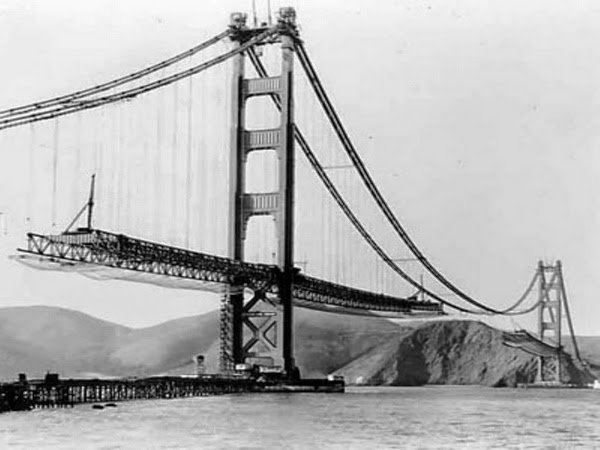The building , over all our land, has left many good buildings and on the other hand, they are useful lessons for future builders. Sometimes poor construction have achieved famous for the disasters that have generated not only in relation to the destruction, but, in the worst case, the number of victims.Let us know the great mistakes of construction throughout history, in this case, the bridge Tacoma Narrows .

The bridge opened on July 1, 1940 . It was a suspension bridge 1600 meters long that connected the Kitsap Peninsula and the mainland in the state of Washington.Its great length allowed him to become the third longest bridge in the world, behind Washington Bridge in New York and the Golden Gate in San Francisco.
Problems from the start
From the moment which opened and gave way to automobile traffic, the locals witnessed a unique spectacle: the bridge is warped and rippled, from one end to another, when the cars passed as a simple and small breeze blew through those places.
On November 7, 1940 at 11am, just 4 months after its inauguration, the structure of the bridge collapsed and fell apart. It was a wind of 68 miles per hour that caused it writhe. Meanwhile, the central axis of the bridge remained still while the two sides of the road without stopping twisted by the wind that blew. While these swings suffered long bridge, this series of medium intensity winds caused the bridge to perform movements so abrupt end collapsed.
No human life was the victim of this incident, but knew the story of Tubby . This is a dog with his own car crossed into the structure. The dog’s owner, realizing that the vibrations were uncontrollable for the vehicle, tried to flee, leaving your pet in the car, who could not get out because of fear that caused him the situation. Rescuers found dead Tubby, who died after falling bridge. With Tubby, and the car lost its owner $ 364.40 as compensation received by both.
The engineers who design the bridge , forgot the effect of the resonance when cars pass over the bridge. Another of his forgetfulness is related to the effects of wind.
These oversights joined the excessive flexibility of the materials used, which left the bridge to a third of the rigidity recommended for this type of construction. The truth is that in those years it was thought about aerodynamics and its influence on this type of construction. However, this was due to the fact that scale constructions are tested in wind tunnels further openings are added to support elements to allow the wind to pass.
We end this series of posts on Large errors in the engineering world with the following: the station Skylab , the skyscraper Citrigroup Center and the airship R101 . 8. Skylab, 1973 Although his name remind us Skynet and the holocaust of the human species, Skylab was the first U.S. space station. Orbited the Earth from 1973-1979, had a weight of 75 tons and was launched on an unmanned mission in May 1973. However, the station suffered severe irreversible damage during the launch, wasting solar shield, that of meteor and its main solar panel that energy obtained.

The ruling came in a streamlined miscalculation because it did not take into account the aerodynamic shield against meteorites and solar panels. In the constant repairs that had, the crew complained of extreme heat on board.
It was visited by astronauts on three occasions, the last team back in February 1974. Finally, in July of 199 landed on Australian territory, which led to a fine of $ 400 to NASA for littering on public lands.
9. Citigroup Center, 1978
The Citigroup Center is one of the tallest skyscrapers in New York with a height of 278 meters and 59 floors. It was built in 1977 and after making the design and begun the execution of the work, the architects realized that the building could fall in a hurricane , causing a domino effect with the other buildings.
To correct this error, builders rushed to place a mass of 400 tons granite , which swings to the opposite side that makes the building, avoiding crashing into a cyclone.
10. Airship R101, 1930
Seven years before disaster struck, the zeppelin Hindenburg caught fire German while landing in New Jersey causing the death of over 30 people-, the British came up with the idea of introducing more than 150,000 meters hydrogen cubic fabric in a bubble .
Under the name of R101, the Royal Airship Works built an airship designed for overseas travel. The airship had a staggering proportions, reaching up to 238 meters long and weighing 49 tons . It was driven by 7 motors lod made him reach 60 knots.
Due to the impatience of some, just test flights were performed. Only there were several very short walks and very good time. On its maiden flight, on October 4, 1930, the R101 charge exceeded expectations. The bad weather, coupled with the negliencia of some leaders, made the steerable nose hit in the outskirts of Beauvais (French town), eventually crashing into a forest. Survived 7 people out of a total of 54 passengers.

0 comments:
Post a Comment